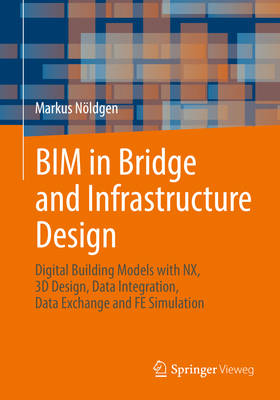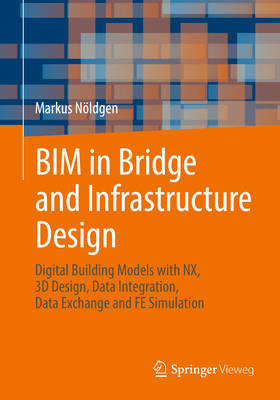
- Afhalen na 1 uur in een winkel met voorraad
- Gratis thuislevering in België vanaf € 30
- Ruim aanbod met 7 miljoen producten
- Afhalen na 1 uur in een winkel met voorraad
- Gratis thuislevering in België vanaf € 30
- Ruim aanbod met 7 miljoen producten
Zoeken
Bim in Bridge and Infrastructure Design
Digital Building Models with Nx, 3D Design, Data Integration, Data Exchange and Fe Simulation
Markus Nöldgen
Paperback | Engels
€ 152,95
+ 305 punten
Omschrijving
The textbook is addressed to students, structural draftsmen and structural engineers who are involved in the design of structures in the course of roads and railways with a focus on Building Information Modeling (BIM).Based on selected simplified examples the new method of object-oriented 3D-modeling (OOM) for alignment-based bridge structures is explained step-by-step with supplementary e-learning material (videos and sample files) for a modern self-assessed learning.A comprehensive 3D-Model of a bridge structure is set up and explained in detail with all relevant background information on the techniques and methodologies in the BIM process. The enrichment of semantic data is shown and explained as well as the combination with parameters and processes such as the combination with masses. An outlook is given for the forthcoming export of the model via neutral .ifc-standard in the OPEN BIM process.In mechanical engineering drawings and simulations are derivedfrom the 3D-Model for many years already so that these options are refered to in this textbook with the focus on design-embedded-simulations for bridge structures. The technique of isogeometric modeling and a linked finite-element-simulation is shown in chapter 4 to outline the potential for future applications.
Specificaties
Betrokkenen
- Auteur(s):
- Uitgeverij:
Inhoud
- Aantal bladzijden:
- 177
- Taal:
- Engels
Eigenschappen
- Productcode (EAN):
- 9783658368005
- Verschijningsdatum:
- 3/03/2022
- Uitvoering:
- Paperback
- Formaat:
- Trade paperback (VS)
- Afmetingen:
- 165 mm x 237 mm
- Gewicht:
- 358 g

Alleen bij Standaard Boekhandel
+ 305 punten op je klantenkaart van Standaard Boekhandel
Beoordelingen
We publiceren alleen reviews die voldoen aan de voorwaarden voor reviews. Bekijk onze voorwaarden voor reviews.










